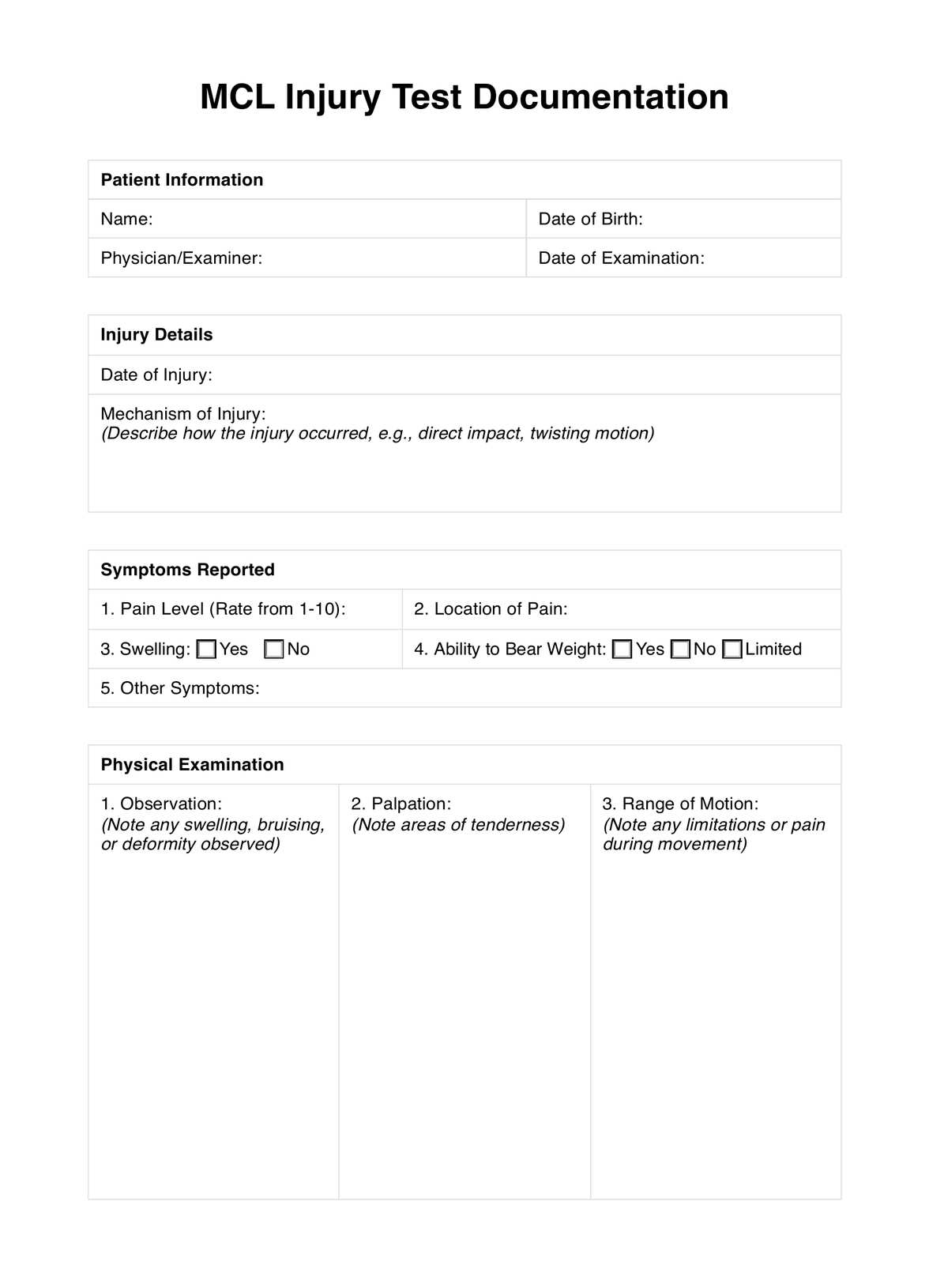Yes, MCL injuries, particularly those classified as Grade I or II, have the potential to heal independently through natural recovery processes. This healing is often supported by implementing rest, engaging in targeted physical therapy, doing strengthening exercises and possibly utilizing a knee brace to enhance knee stability. Conversely, Grade III injuries, characterized by complete ligament tears, usually necessitate more aggressive treatments, such as surgical intervention, to restore knee function fully.

MCL Injury Test
Discover key insights on MCL injuries, from symptoms and diagnosis to recovery. Get expert advice for effective treatment and healing.
MCL Injury Test Template
Commonly asked questions
The recovery time for an MCL injury varies significantly depending on the injury's grade. Grade I injuries can heal in at least one to three weeks with proper care. Grade II injuries might take four to six weeks, requiring more intensive therapy and possibly bracing. Grade III injuries, due to their severity, often demand several months and potentially require surgery, followed by a comprehensive rehabilitation program.
Walking on an injured MCL depends on the injury's severity. Individuals with Grade I injuries may still walk relatively comfortably, albeit with some pain. Those with Grade II injuries might manage to walk but will likely experience more significant discomfort and instability. Walking with a Grade III injury can be extremely challenging and painful, often requiring the support of a brace or crutches.
EHR and practice management software
Get started for free
*No credit card required
Free
$0/usd
Unlimited clients
Telehealth
1GB of storage
Client portal text
Automated billing and online payments











